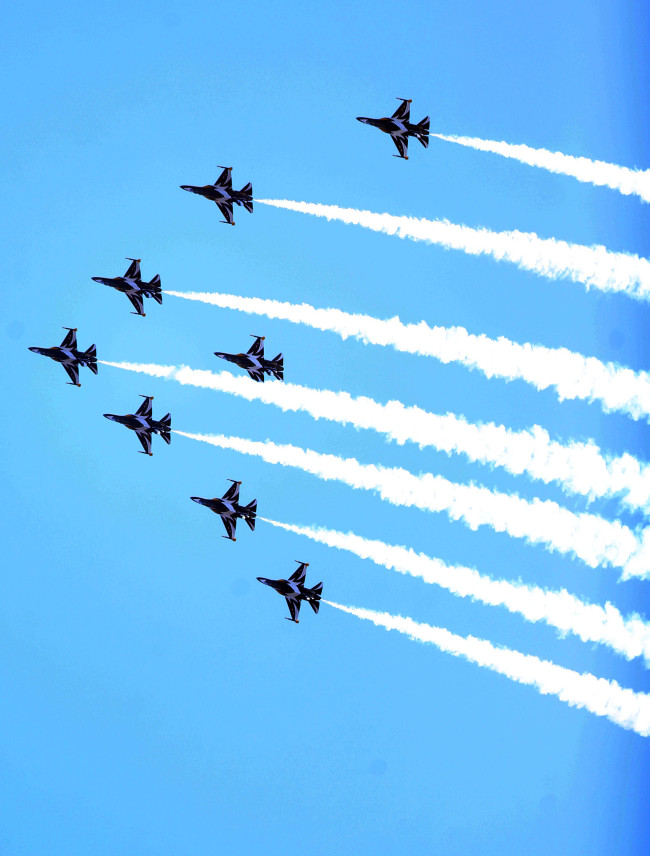[Newsmaker] Air Force to revamp command structure
By Korea HeraldPublished : March 31, 2015 - 20:29
The South Korean military has decided to reorganize the Air Force’s command structure to enhance efficiency in both peacetime and wartime operations, and better incorporate new weapons systems into its missions, the Air Force said Tuesday.
Under the reorganization plan, the Air Force’s Southern and Northern Combat Commands will be refurbished into the Air Combat Command and the Air Mobility & Reconnaissance Command ― a shift from the hitherto geographically arranged command structure to a function-based one.
Under the reorganization plan, the Air Force’s Southern and Northern Combat Commands will be refurbished into the Air Combat Command and the Air Mobility & Reconnaissance Command ― a shift from the hitherto geographically arranged command structure to a function-based one.

A series of advanced aerial assets that the military has deployed over the last decade have offered greater operational flexibility, which has made it unnecessary for the Air Force to maintain the geographically-divided command mechanism.
“Considering the enhanced mobility of the advanced combat aircraft, there is no need to maintain regional Air Force commands as we have done in the past,” an Air Force official said, declining to be named.
The decision for the change was made at a session of the Joint Chiefs of Staff Council last Friday, which was presided over by JCS Chairman Adm. Choi Yun-hee.
The Air Combat Command will be stationed in Daegu, while the Air Mobility & Reconnaissance Command will be based in Osan. Each of the new commands is to be headed by a two-star commander. The Air Force will test-run the new structure from July and fully introduce it from January next year.
“As it is a reorganization of the command structure to enhance operational efficiency, there is no need to increase troops or budgets for the new commands,” said the official.
The need for an overhaul of the command structure has been raised for quite some time with officials and experts arguing that in a small operational zone on the Korean Peninsula, dividing the commanding structure according to region is not suitable for optimal aerial operations.
In an emergency, both F-15K fighters, based in Daegu, and KF-16s, based in Seosan, are to be mobilized for the same mission, which means the function-based command structure would be better to cope with aerial threats rather than having specific commands take charge of certain regions.
The change in the command structure has been caused mainly by Seoul’s recent and future procurement of a series of advanced Air Force assets including airborne command and control aircraft, all of which have increased operational mobility and flexibility, and decreased the need to divide operational areas according to region.
The South Korean military plans to introduce refueling tankers, high-altitude and low-altitude unmanned reconnaissance aircraft and stealth fighter jets, which will increase the need for a function-based command structure.
“When we first created the regional commands, there were only fighter jets and little need to focus on the functions of aerial assets. But now, we need to reorganize the command structure into a function-oriented one,” an Air Force official told The Korea Herald, declining to be named.
The reorganization plan is also designed to streamline the overall command structure and remove any overlapping functions among regional commands.
By Song Sang-ho (sshluck@heraldcorp.com)
-
Articles by Korea Herald







![[KH Explains] How should Korea adjust its trade defenses against Chinese EVs?](http://res.heraldm.com/phpwas/restmb_idxmake.php?idx=644&simg=/content/image/2024/04/15/20240415050562_0.jpg&u=20240415144419)











![[Today’s K-pop] Stray Kids to return soon: report](http://res.heraldm.com/phpwas/restmb_idxmake.php?idx=642&simg=/content/image/2024/04/16/20240416050713_0.jpg&u=)